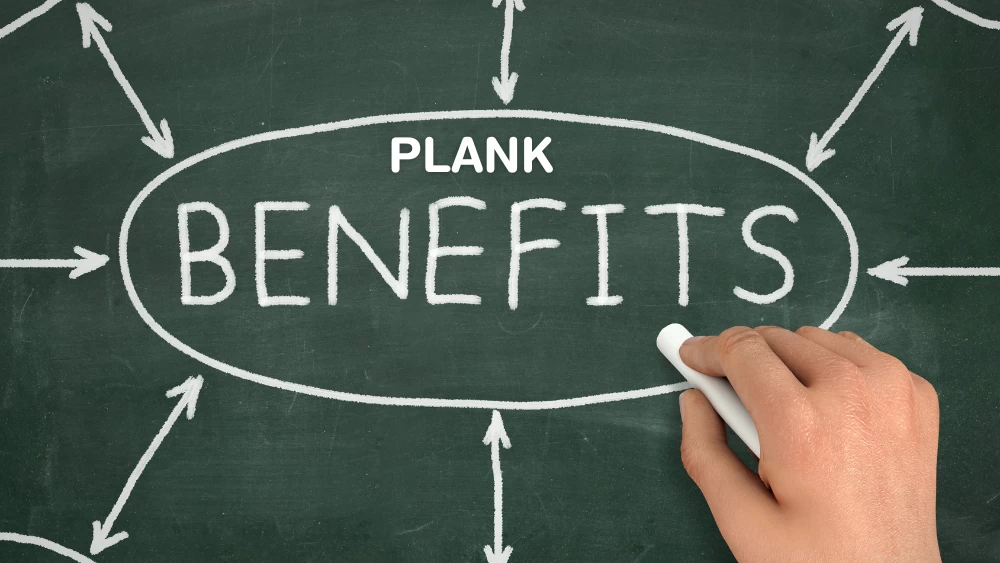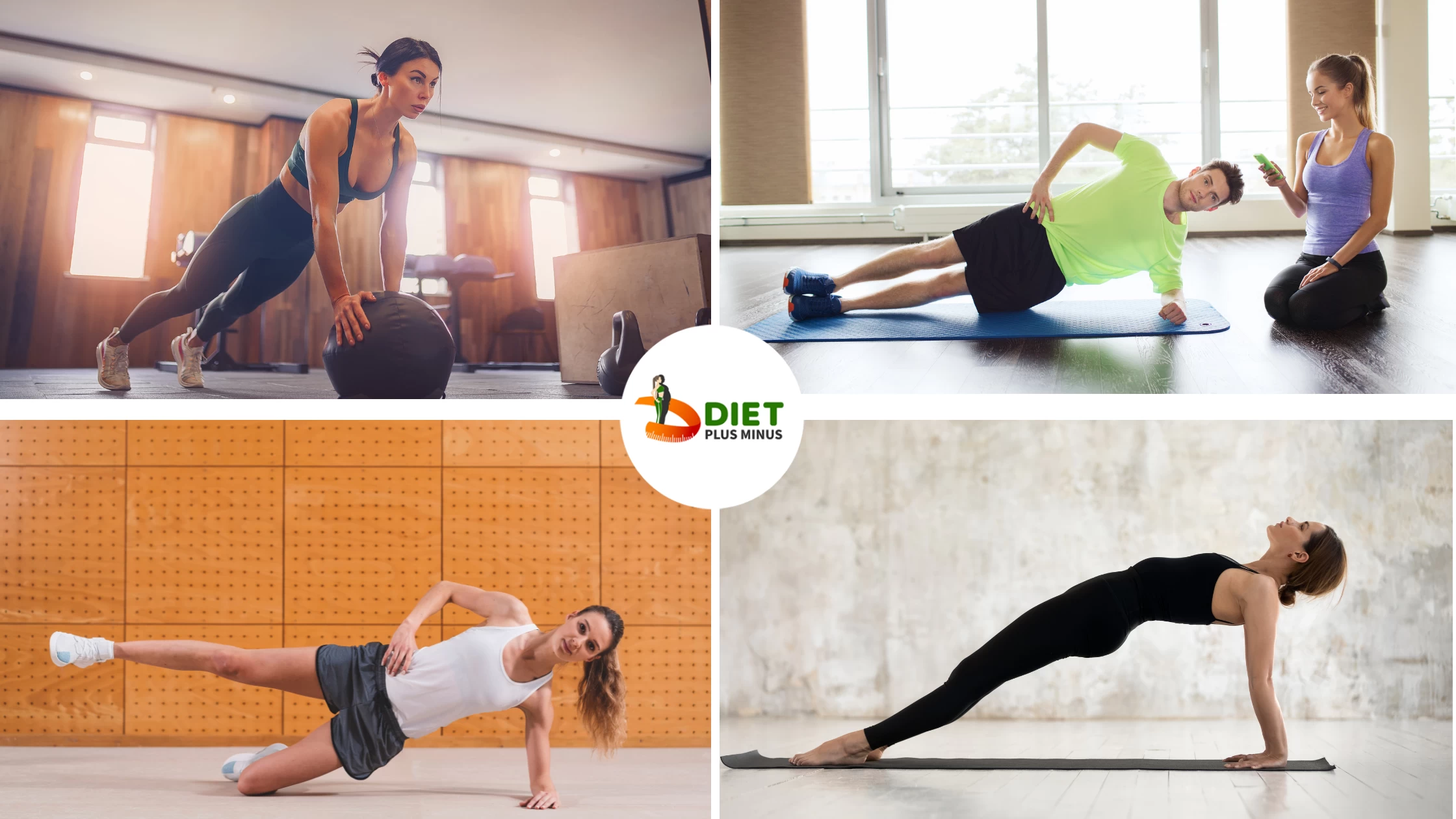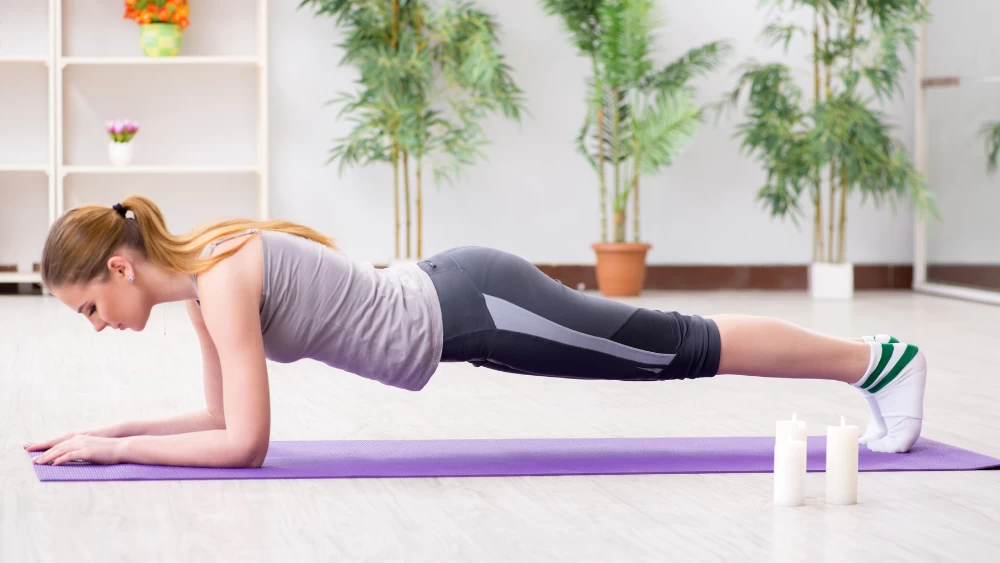
- 6th March 2023
Table of Contents
What is Plank?
The plank is an exercise that strengthens the abdominal and back muscles. Position yourself on the floor face down with your arms and legs extended and your back as straight as you can manage. Keep your body rigid and in a straight line, like a plank or board, for as long as you can. Planking can be done in a variety of positions, from lying flat on the floor to hanging from a wall. Although planking appears easy at first glance, it actually requires quite a bit of strength to perform correctly for more than a few seconds. Because of this, it is among the best exercises for toning and strengthening the abdominal muscles. In addition, planking can be modified to focus on specific muscle groups, like the shoulders or the glutes, for enhanced effectiveness. The plank is a simple exercise that can be done anywhere, at any time, and with no special equipment.
Plank Exercise: Discover the Primary Muscles Involved in Building Core Strength
Core muscles like the rectus abdominis, transverse abdominis, obliques, and erector spinae are worked hard during a plank, an isometric exercise. Other muscles, like the glutes, shoulders, and quads, can be activated to help stabilize the body while performing the plank exercise. Planks are a great way to strengthen your core and improve your balance and coordination because they use so many different muscle groups.
Note: Due to the ease with which one can compensate by using their shoulders and lower back, I prefer to have my clients perform a plank for 15-20 seconds rather than a prolonged period of 1-2 minutes. Rather than putting all of your weight on your shoulders, a shorter plank that targets the transverse abdominals and glutes will yield better results.
Health Benefits of Plank
Strong abdominal muscles, a steady base of support, and a strong body are all benefits of planking. By strengthening your core, you can enhance your posture and lay a solid groundwork for other fitness routines. The increased core muscle endurance you gain from planking can also come in handy for preventing injuries during other workouts and sports. In addition, planking is superior to isolation exercises because it engages multiple muscles simultaneously. Planking has the added benefit of enhancing coordination and agility by requiring the use of the entire body in the exercise. Finally, planking helps strengthen mental fortitude because it necessitates sustained attention to detail over an extended period of time in order to keep proper form. The discipline and perseverance you gain from this practise can be applied elsewhere.
Proper Plank Procedures
Be in a level, secure, and spacious area where your body can move freely. Put your palms down directly under your shoulders and feel the earth beneath your fingers. Keep your toes tucked under and your feet hip-distance apart. Create a straight line from your head to your heels by drawing your belly button in and pressing your hands into the floor; avoid rounding your lower back or sagging your hips. Maintain normal breathing while holding this position for 15-60 seconds, as appropriate for your fitness level. Slowly come out of plank pose by letting go of each hand individually, rolling onto all fours, and then standing back up while paying attention to how you feel compared to when you started.
Types of Plank

High Plank: The classic plank exercise consists of holding a high plank, with your body in a straight line from head to toe and your weight distributed evenly between your hands and toes. You won't get the full benefit of the exercise unless you keep your core muscles active the whole time. You can increase the difficulty by performing single-arm lifts and dips alternately or by extending your arms to the ceiling.
Side Plank: The obliques, which allow you to twist and turn your torso from side to side, get a good workout during the side plank variation of the plank. Start by lying on your side with one foot on top of the other; then, keeping your hips off the floor, raise yourself up onto one elbow to perform a side plank. Maintain a perfectly vertical line from your head to your toes as you perform this exercise.
Plank Jacks: Plank Jacks combine the benefits of the traditional high plank position and jumping jacks into one effective exercise. Jump both feet out at the same time from a high plank position, keeping your arms fully extended and your feet hip-width apart; then bring your feet back together under you as you come back down to a low plank position (arms bent at 90 degrees). Maintain this active motion to get in shape quickly!
How Long to Plank

In order to maximise the benefits of a plank, its duration must be optimised. Muscle groups will be worked harder and more intensely depending on the length of the plank. While 30 seconds is the minimum suggested time for a plank, there are many ways to modify the exercise to make it more challenging and work more muscle groups. Example: instead of holding a plank position for 30 seconds straight, try alternating with 15-second holds. Completing multiple sets with brief rest periods between them is a great way to increase your overall endurance while still providing a significant challenge with each individual set. Planks can be made more challenging by incorporating other exercises, like push-ups or crunches. You should plank for as long as feels comfortable for you, bearing in mind your fitness level and your goals; for beginners, 30 seconds is a good baseline.
Changes and Alterations
There are many ways to increase the difficulty of the plank by changing or modifying the exercise in various ways. To do this, you can try increasing the duration of your plank holds. Try holding the plank for 30 seconds at first, and work your way up to two minutes. When performing an oscillating plank, you lift one arm at a time off the ground while maintaining a straight body. This highlights the importance of strengthening one's core. To further challenge your muscles and increase the difficulty of your planks, you can use weights or resistance bands. Last but not least, incorporating an additional challenge to traditional planks is the use of a stability ball or sliding disc.
Conclusion
Correct execution of the plank exercise is essential for gaining the full benefits it offers. Planks should be performed with the utmost attention paid to form, with the focus being on keeping the body in a straight line from head to toe and actively engaging the core. You should also break up your plank routine so that no one muscle group is overworked. Change up your plank routine by alternating between regular and side planks, or by using an exercise ball or stability discs for support. Finally, keep in mind that everyone has a unique fitness level, so you should always pay attention to your own needs and make adjustments accordingly. You can get the most out of planking and reduce the risk of injury by following these guidelines.
